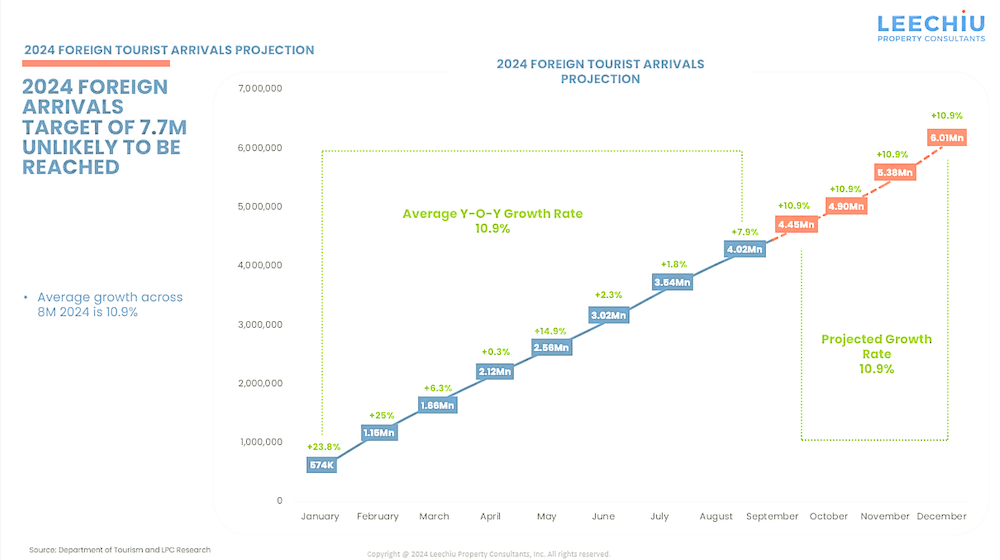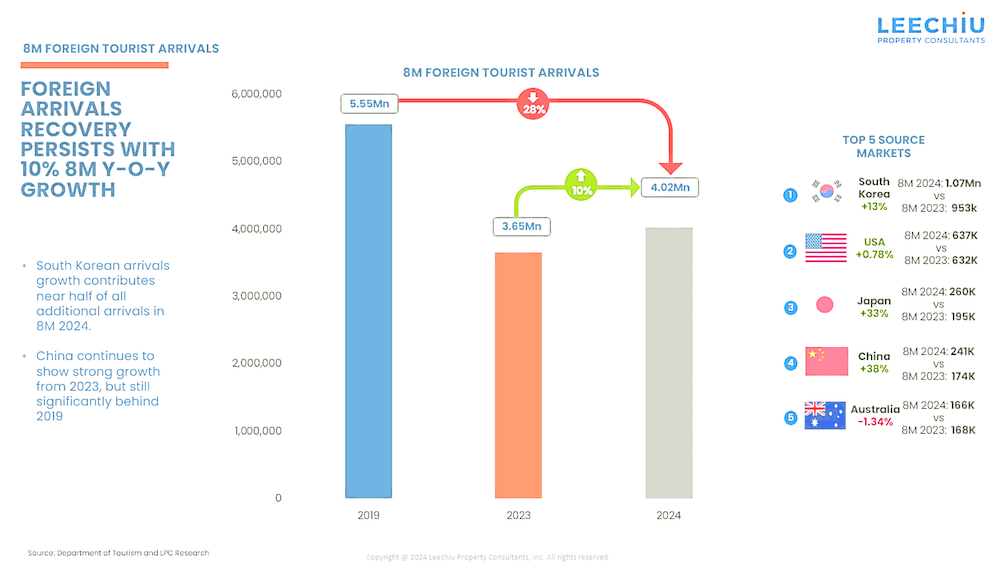On the path to 7.7M: Strategies to boost PH inbound tourism
The Philippines is climbing to new heights in global tourism.
Over 4 million foreign tourists visited in the first eight months of 2024, and the country secured prestigious wins at the 2024 World Travel Awards Asia and Oceania Gala Ceremony—including “Asia’s Leading Marketing Campaign 2024” for its “Love the Philippines” campaign.
Despite these achievements, some markets, particularly China, have shown slower recovery. This presents challenges to the country’s target of 7.7 million foreign arrivals for the year.
To further elevate the hospitality industry, the Philippines needs to address key obstacles and explore new growth avenues.
Streamlining travel with e-visas
Expediting the full implementation of the e-visa system is a strategic move that could enhance the Philippines’ appeal.
The introduction of an efficient, hassle-free e-visa system would make the country more accessible to travelers from key markets like India. Simplified visa processes would not only attract more visitors but also encourage them to extend their stays, driving higher tourist spending and fostering long term growth.
Understanding your market
Hotel owners need a deep understanding of their target markets.
By identifying guest preferences, behaviors, and travel patterns, hotels can tailor their services, marketing strategies, and amenities to meet specific needs.
This does not only improve guest satisfaction and loyalty but also enables hotels to anticipate demand, optimize pricing, and plan for peak seasons, leading to higher occupancy rates and increased revenue.
Diversifying source markets
To sustain growth, the Philippines must broaden its appeal beyond traditional tourist markets.
Regions like the Middle East, Hong Kong, Singapore, Vietnam, and Malaysia offer promising opportunities. These markets are not only geographically proximate but also benefit from established air connectivity, making them ideal targets for expansion.
By diversifying its visitor pool, the Philippines can reduce its reliance on a handful of key markets and create a more resilient tourism sector.
Recalibrating strategies
While easing visa policies for Chinese tourists may not be viable due to the current geopolitical landscape and security concerns, the Philippines can still tap into this valuable market through alternative strategies.
These may include launching targeted marketing campaigns, improved air connectivity, customized travel packages, and partnerships with Chinese travel agencies. Focusing on non-visa-related solutions can attract more Chinese visitors while maintaining national security.
Charting the path forward
To solidify its position as a premier global destination, the Philippines must strategically address key areas. Implementing an e-visa system and diversifying source markets are crucial for sustained growth.
By understanding target markets, streamlining travel processes, and attracting a broader range of visitors, the Philippines can capitalize on recent successes and drive the continued evolution of its vibrant tourism industry.
The author is a senior researcher for Hotels, Tourism, and Leisure Department of Leechiu Property Consultants Inc.


